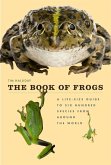Animals use venoms primarily for killing or capturing the prey and for deterring the predator. Animal venoms are a rich source of complex biologically active molecules, which have various molecular functions and targets. There are two ways of classifying animal venoms, first by origin such as spider venoms, snake venoms, and scorpion venoms, and second by their effects on the body, such as hemotoxic and neurotoxic venoms. Animal venoms can lead to serious illnesses in humans and even death in severe cases. They can also cause significant dysfunction of the cardiovascular, muscular and nervous systems. Venoms of several animals are rich sources of compounds, including peptides, proteins, and neurotransmitters, which can damage the prey's body. However, animal venoms also hold therapeutic potential for treating conditions of thrombosis, arthritis, and some cancers. This book unfolds innovative insights on venomous animals and their venoms. It presents researches and studies performed by experts across the globe. The book will serve as a valuable source of reference for graduate and postgraduate students.








